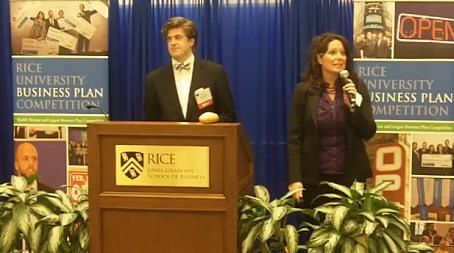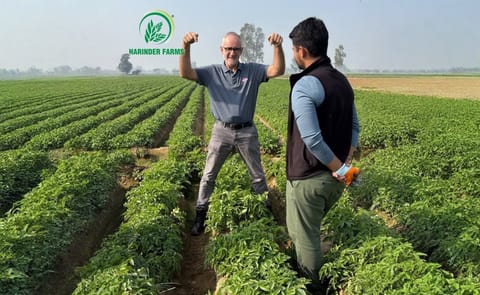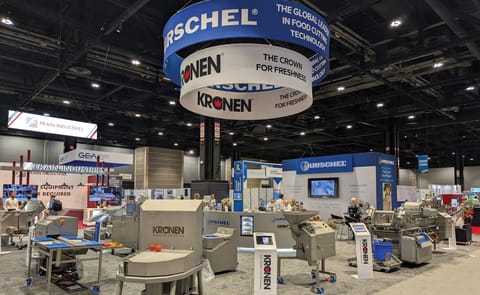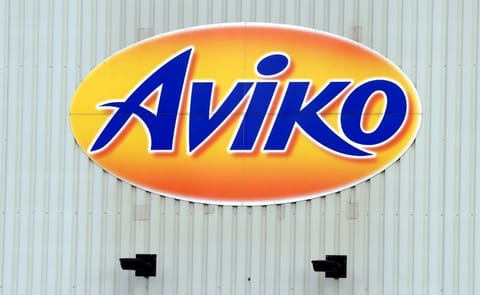A University of Idaho food scientist’s invention that could promise healthier processed potato products helped a student business plan team finish fifth among more than 1,600 worldwide entries in the Rice University Business Plan Competition.
University of Idaho students Gaylene Anderson and Jacob Pierson competed in the contest Rice University billed as the world’s richest.
This year’s prizes total topped $1.55 million. The U-Idaho team finished among the six finalists from 42 teams invited to Houston for two days of grilling by 250 volunteer judges.
The business plan team included Washington State University student Anna Hansen, who was unable to travel to Houston where Anderson and Pierson pitched the idea for Solanux. The new business is built on University of Idaho food science professor Kerry Huber’s invention. Like the team, the School of Food Science is a joint effort of the two universities.
For lovers of potato snack foods and restructured fries (think Pringles potato crisps), Huber’s patented process offers potato ingredients with high amounts of resistant starch that can help lower a person’s glycemic index response, improve insulin levels, and lower fat and cholesterol levels. For those with type 2 diabetes or allergies to corn or wheat products, resistant starch from potatoes could open a wider range of food choices.
The students claimed $25,000, including the fifth place award sponsored by Ernst &Young, the $20,000 Courageous Women Entrepreneurs Award sponsored by nCourage Entrepreneurs Investment Group and the $1,000 Elevator Pitch First Place Award sponsored by Austin Ventures.
The three students will graduate this spring, Hansen with a WSU bachelor’s in business, Pierson with a University of Idaho law degree and Anderson with a University of Idaho executive master of business administration. Anderson serves as the College of Agricultural and Life Sciences licensing associate in the university’s Office of Technology Transfer.

Solanux presentation at the Rice University business plan competition (15 minutes)
“But we competed in a really fun, competitive way, and people were pushing for us. And they loved our potato idea,” she added. “There were a lot of influential people there, and we wanted to showcase Idaho, the potato industry, and the university.”
Part of Anderson’s shtick relied on the potato’s appeal and what might have been the biggest tater in Texas.
Before leaving Moscow, she carefully chose the most attractive tuber from a bin of bakers and packed it all the way to Houston, then carried it like a mascot to each event. In a world of nanotechnology, computer code and medical devices, her Idaho russet hit home. Certainly on the Rice University campus during the entrepreneurial feeding frenzy it was the most interesting of Idaho’s famous potatoes.
Its message: Stay hungry my friends.
This year’s competition, the 12th, drew applications from some 1600 teams from around the world. Organizers winnowed the field to 42 teams invited to Rice’s Houston campus. There the teams pitched their ideas to judges, who included venture capitalists, entrepreneurs and business leaders.
The overall winner of the competition was NuMat Technologies, Inc. from Northwestern University that won the grand prize of $874,300. Two teams from Purdue University took second and third with medical devices and fourth went to an MIT team with an improved battery design for electric vehicles. Sixth went to a Johns Hopkins University team. Other universities represented in the 42-team field included Stanford, Duke, Penn, Carnegie Mellon and six from England, Denmark, Germany and India.
FORTUNE covered the competition and will feature the winners, teams and competition in the magazine’s May 7 issue and on CNNMoney.com.
Huber’s process creates food ingredients that contain high amounts of resistant starch and produces low glycemic response results. The new modified potato starch products could allow potato processors to gain entry into markets that currently are inaccessible. Additionally, people that have problems with diabetes, allergies to corn or wheat products, or simply want more potato food choices will now have a healthier alternative.
The Solanux team’s business plan targets the rapidly growing functional food market. Huber’s process could yield a variety of potato products that include potato flakes, granules, flour, dehydrated hashbrown pieces and fresh mashed potato products.
These ingredients can be used by food manufacturers to create restructured fries and chips, instant mashed potatoes, soups, and several snack food items that contain new health benefits.
Huber’s process won for early stage innovation of 2011 at the Idaho Innovation Awards program in October at Boise.
Last year, the Solanux team placed third among 104 entries in the University of Washington’s business plan competition, winning $5,000. The team also won first and $10,000 in the University of Idaho’s VIEW, or Vandal Innovation and Enterprise Works competition.
Source: University of Idaho












